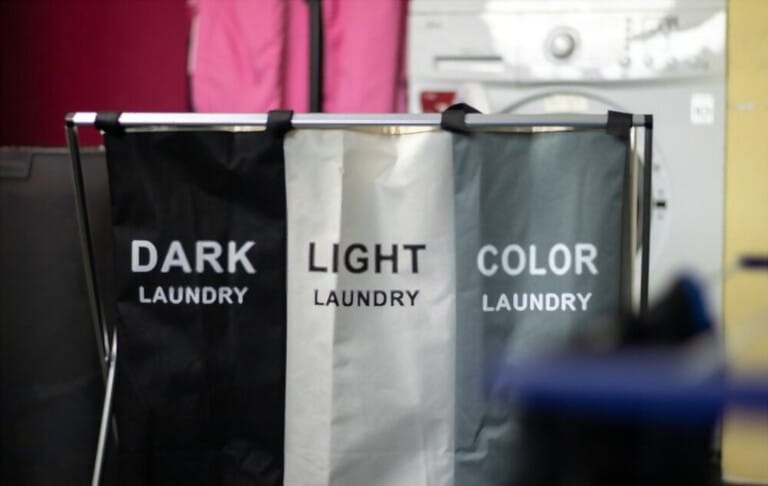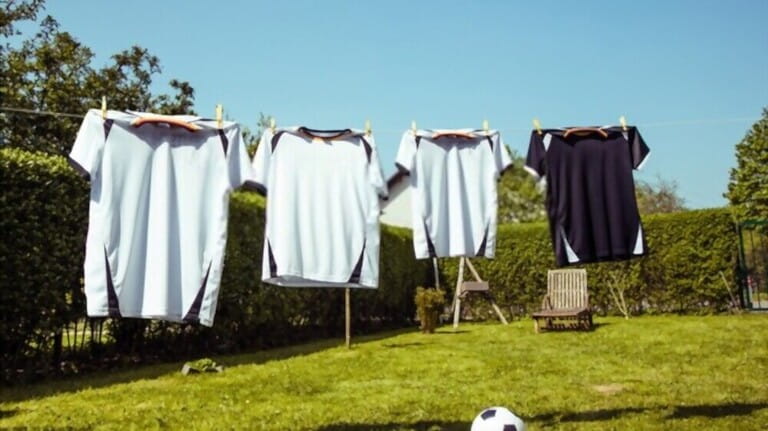Table of Contents
The way you look matters in the athletic world, whether you’re cheering on your kid, getting yourself ready, or wearing apparel to honor your favorite athlete. To make sure you or your kiddo’s sports jersey always looks good, here are five ways to clean it.
The Jerseys should be turned inside out Before You Wash It
Somewhere down the line, you may have heard the adage, “The name on the front of the jersey matters more than the name on the back.” Disregard this idea, however, when dealing with soiled football trousers, padding, or dusty baseball shirts. This is because cleaning jerseys requires turning them inside out.
Oil or sweat that has seeped through the surface of a treasured baseball, basketball, or football jersey can be easily removed by turning the garment inside out. The longevity of the stitching in terms of the writing and numbers is also ensured by this procedure. Jersey patches will be protected from wear and tear as well.
Make sure you sort your jerseys by color before throwing them in the laundry. This prevents the jersey’s colors from fading and deteriorating due to any color bleeding that could otherwise occur.
To reduce the likelihood of snagging or tearing, baseball jersey buttons should be undone. In addition, hockey jerseys should have their laces removed before being washed and cleaned in a mesh washing bag. If you don’t have access to a mesh bag, a pillowcase will do in a pinch.
Use cold water and a slow spin cycle
Sports jerseys’ individual styles and identities are expressed through their colors, logos, and decals. It is crucial that these characteristics be preserved. Choosing the right wash cycle can also aid in the uniforms keeping their size and form. The last thing you need is for your basketball shorts to shrink and look like they did in the ’80s.
Jerseys should normally be washed in cold water and on a low-spin cycle, however these rules may not apply to all sports (more on this below). By following these steps, you may prevent your jersey from getting faded, shrunken, or deformed. And to protect the jersey’s numbers and inscriptions, wash it in cold water on a gentle cycle.
Opt for a Cleanser that Fights Smells
While it’s critical to keep a jersey looking good, removing stains and keeping it smelling fresh are just as vital. Football and soccer games may take place in a wide range of climates. Knee and shin guards can get dirty or muddy, and entire jerseys need to be cleaned regularly to remove filth and smells.
It takes a powerful detergent to handle the messes created by playing soccer in the rain or cleaning baseball uniforms after consecutive games. Use Arm & Hammer Plus OxiClean Odor Blasters, Fresh Burst, to eliminate unpleasant odors. When compared to popular low-cost detergents, this liquid has double the stain-fighting effectiveness per drop. It has a special composition that eliminates smells from the body, the towel, and the perspiration in one simple step. It may be used with regular and High Efficiency (HE) machines, and it can handle cold water loads.
When washing a large load of jerseys, you may save time and money by combining ARM & HAMMER Super Washing Soda with your regular detergent.  Adding a scoop of this laundry booster to your load improves the efficacy of your detergent by as much as 15 percent (when compared to the top value detergent alone) on tough stains like mustard and blood.
Adding a scoop of this laundry booster to your load improves the efficacy of your detergent by as much as 15 percent (when compared to the top value detergent alone) on tough stains like mustard and blood.
Odors on sports jerseys can also be removed using white vinegar. White vinegar’s acid has powerful anti-odor properties. To eliminate smells without leaving a vinegar aftertaste, add a quarter cup of vinegar to the bleach dispenser.
Forget about using fabric softeners!
Fabric softeners may seem like the ideal way to keep your sports jerseys from getting rough and wrinkle-free after washing, but you should really avoid using them.
Fabric softeners reduce the capacity of your jerseys and other athletic gear to absorb and wick perspiration. Avoid using fabric softeners in the wash if you want your jersey to smell fresh after being washed.
Skip the Dryer
The washing process is simply one part of maintaining the quality of your cheerleading costume or favorite jersey during the season. Jerseys should never be dried in the dryer after being washed.
Jerseys are susceptible to damage from both hot water and the heat and friction caused by the dryer, which can cause the writing and numbers to peel or fracture. This may not happen after a single drying cycle, but it can happen over time. Therefore, it is not recommended to dry jerseys in the dryer after each use or during the season.
After you’ve finished washing your jerseys, flip them inside out and give them a good shake. Place them flat on a towel or drying rack, or hang them up on plastic or wooden hangers to dry in the air.
Bonus: How to Get the Color Back on Your White Football or Baseball Pants
Grass stains from the football field and baseball field dirt can be a pain to remove. So, what’s the best way to clean baseball and football pants and get the color back? White vinegar is the key ingredient.
Let the grass or soil stains soak in a combination of one cup of water, one cup of vinegar, and one tablespoon of ARM & HAMMER Baking Soda for up to 30 minutes. A paste of vinegar and ARM & HAMMER Baking Soda may be applied to the stained spots with a toothbrush and then laundered out.
How Do I Clean My Knee Pads or Padded Jersey?
While we previously recommended cold water for washing jerseys, this rule does not apply to the laundering of protective trousers and knee pads.
Pads must be removed before washing any style of football jersey. Wash the shoulder pads in warm water on a moderate cycle after applying the stain treatment procedure. Knee pads used in football, volleyball, or hockey should be washed and dried in a mesh laundry bag to prevent them from becoming tangled up.
Wash soccer jerseys in the same way as mentioned earlier. After that, use a toothbrush and soapy water or a solution of water, vinegar, and baking soda to scrub the grime out of your shin guards.

